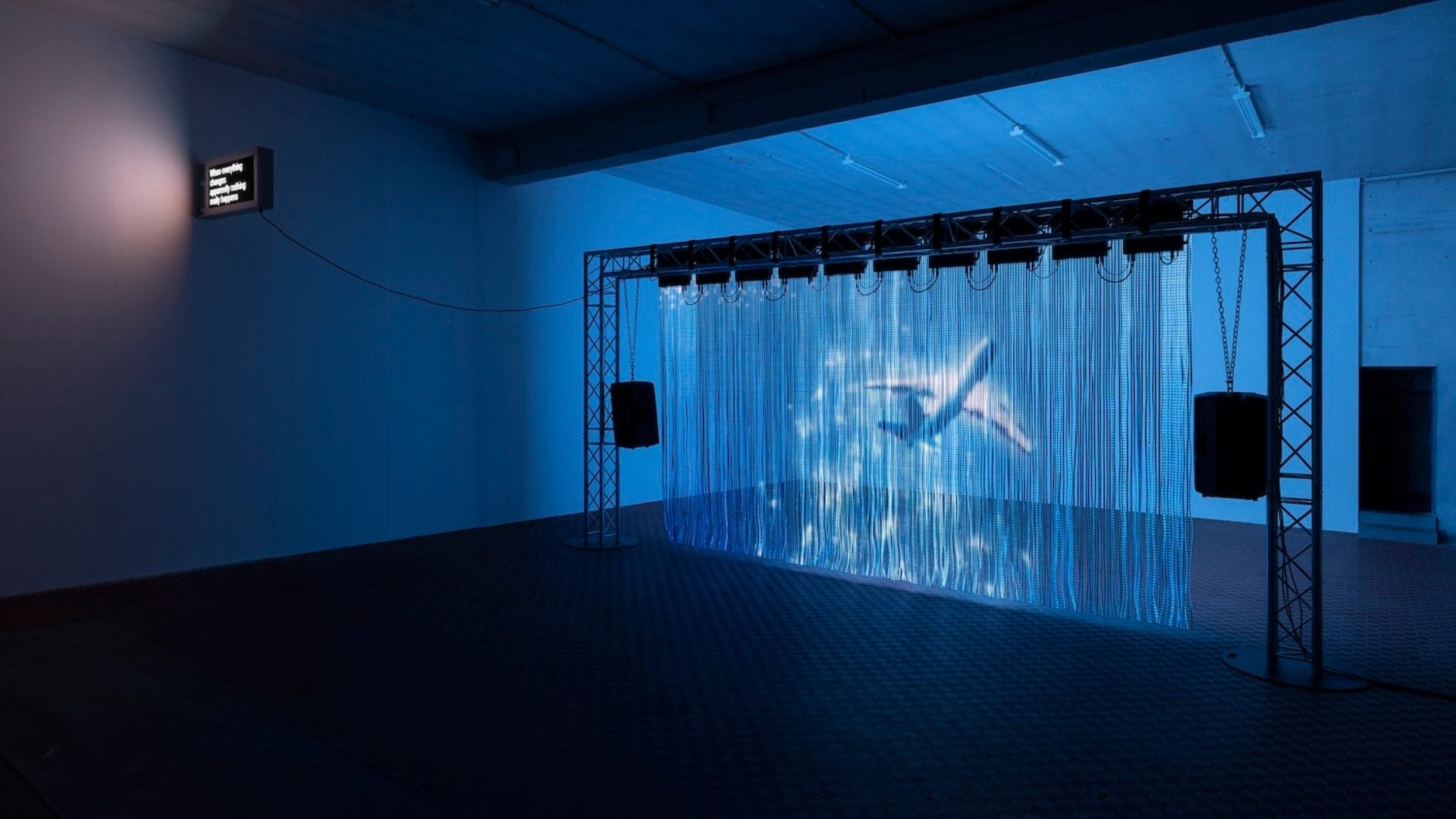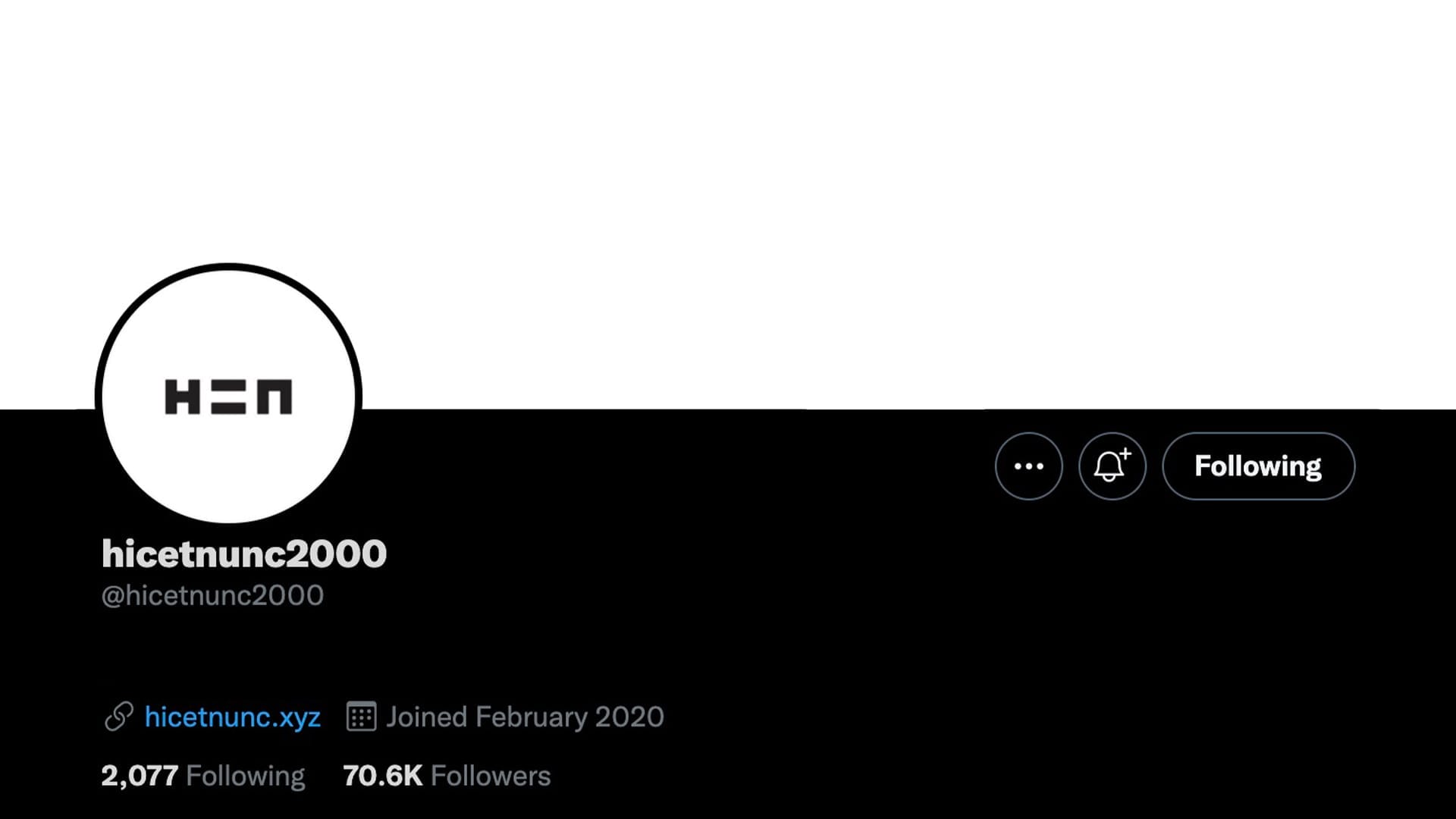
RIP HEN: Reflections on the Early HEN Days
Two years since the abrupt closure of Hic et Nunc (HEN). In this special retrospective, we commemorate a platform has that left an indelible mark on the digital art community.
Our exploration revisits HEN’s innovative inception, the challenges it faced, and its lasting influence on the digital art landscape while bringing in the insights of pivotal figures — Mario Klingemann (Quasimondo), Diane Drubay, Djangobits, Haydiroket, James Paterson (Presstube) and Poppel — who not only witnessed but actively sculpted HEN’s trajectory, offering a rich tapestry of experiences and ideals from a community that became a symbol for digital creativity and collaboration.
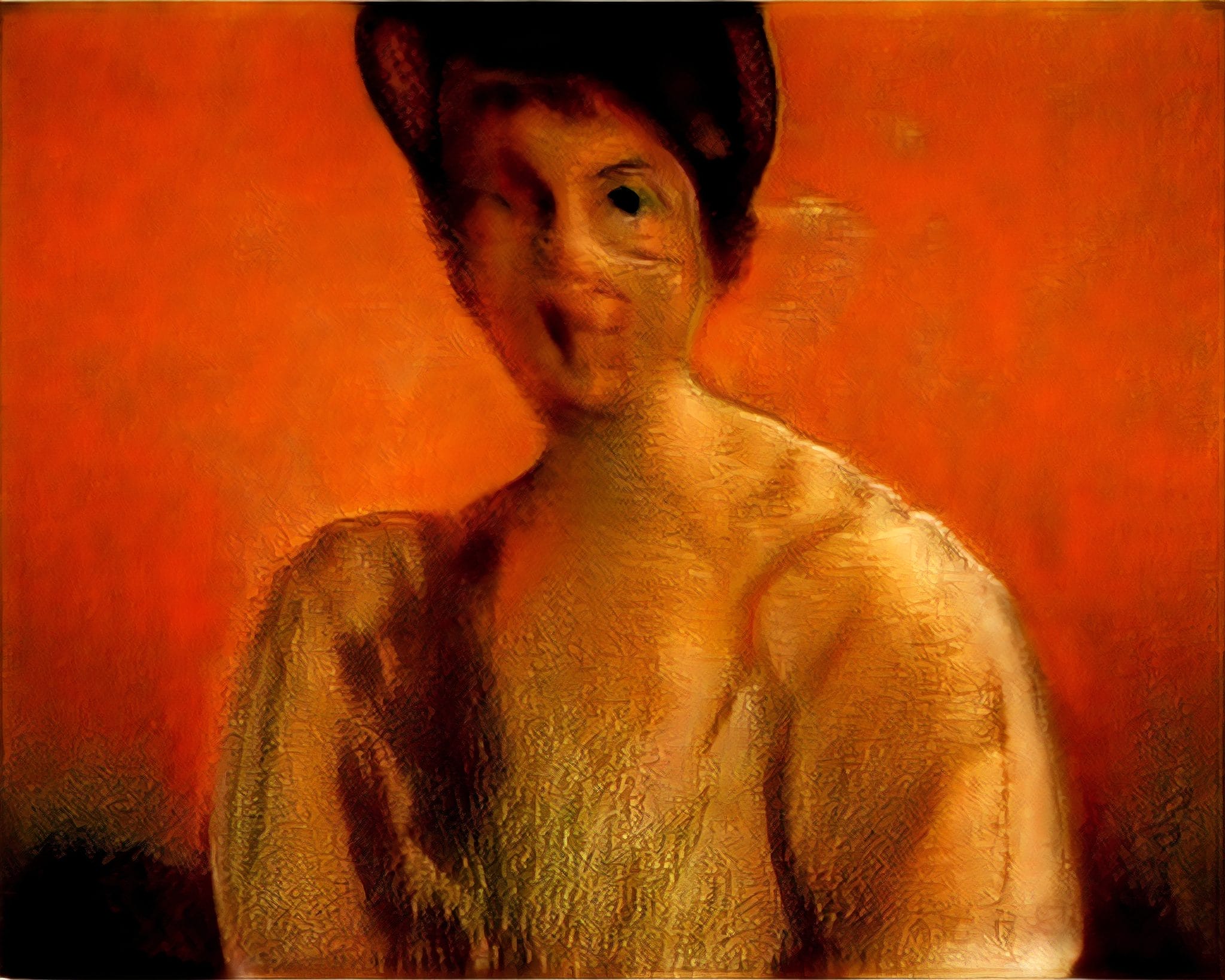
The Pre-HEN Landscape: An Ecosystem Awaiting Revolution
Before HEN’s emergence, the NFT marketplace was largely defined by high minting costs on the Ethereum blockchain, creating an exclusive environment that marginalized many artists, especially from developing regions.
“An NFT platform should be like a modern and inclusive city, whatever you do, there’s always a corner for you. That means equal opportunities for everyone. Before the discovery of HEN, I got an impression of NFT from all those 5 minute reports produced by mainstream mass media, and thought the NFT land was an irredeemable vice city and another ninth hell of our digital life.”__Poppel
In reflecting on this era, Presstube notes the fundamental difference with HEN: “At the time you needed a fair amount of money to operate on ETH… Yet here was this super underground grass-rootsy thing where all you needed was 1 TEZ to get going.”
Artists like Haydiroket found themselves at a crossroads in this digital landscape, seeking an equalitarian platform — “HEN wasn’t just an NFT platform; it was a statement, a digital declaration of independence.”
This period of expectancy set the stage for HEN’s rise, hinting at the transformative power it would soon unleash. The community craved a platform where artistry and innovation could flourish without financial barriers—a platform where the essence of art would triumph over exclusivity.
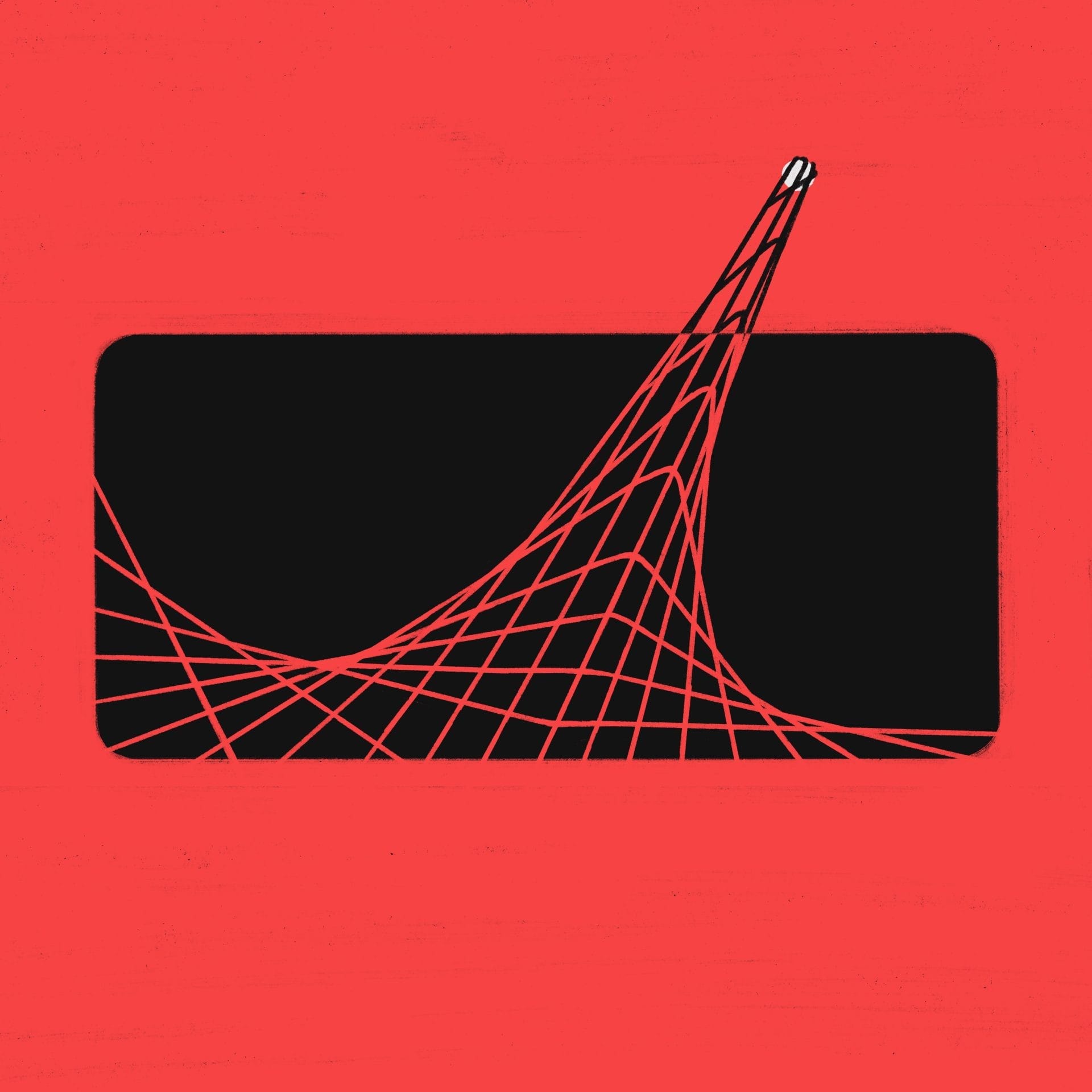
HEN’s Dawn: A Turning Point in Digital Art
Against a backdrop of evolving digital paradigms, Hic et Nunc (“Here and Now”) emerged, breaking the mold of conventional NFT platforms, standing out as a symbol of limitless imagination, innovation, and unity.
Created by Brazilian developer Rafael Lima initially as an experiment, HEN finally offered a refreshing contrast to its forebears’ commercial focus and high costs. It introduced an era where artists and enthusiasts could interact and flourish, unhindered by restrictions or obstacles in the name of its decentralized ethos.
When asked to give us an insight into the inception of HEN, Djangobits explains “In January 2021, NFTs and art NFTs were nothing new. But Rafael Lima’s HEN was so brutally reduced to the art itself that it somehow attracted people not because of sale prospects, like all the other shiny platforms. After its launch on January 29, 2021, only a handful of Tezos users minted some NFTs for fun and testing on this platform, which did not clearly define its purpose (see “The Lost HicEtNuncs”, made by Mike Tyka). The first bigger buzz happened in February 2021, when artists, some seeking for a more sustainable platform than Ethereum, started to mint and talk about it, like Qartsi (Token #14), Rodrigo Koshino / Kosha (Token #33 and #66) and Mario Klingemann / Quasimondo (Token #111). These very early mints of art on HEN suddenly made the platform shine and revealed it’s subliminal potential as an exhibition place.Within a few days, more individuals with a passion for art and substantial experience joined the platform. Presented on this minimalist, completely gatekeeper-free platform, the spotlight was solely on their artworks. The stream on the main page quickly became a wonderland of deep art and random trash (also depending on the eye of the beholder). It felt a bit like a flea market, but stuffed with hidden gems.More and more artists were attracted by Hicetnunc and previous minters and decided to give it a try. In less than 60 days from its inception, 10,000 tokens had been minted, and by the end of March, nearly 1,000 tokens were being added daily, revealing an overwhelming and never ending flow of amazing artworks.”
A name like “Hic et Nunc” perfectly captures the essence of its mission: to be present in the moment and make the most out of the digital art movement.
When asked about the early HEN days, Diane Drubay shares, “as I recall the early days of Hic et Nunc, my heart swells with a tender blend of nostalgia and admiration. It was a haven of creativity where generosity wasn’t just a word, but the very currency that coursed through its veins —a space that gave artists a voice, a spotlight, a chance.
Hic et Nunc was more than a marketplace; it was a philosophy, a statement of intent, a demonstration of the democratizing power of blockchain technology. It was about dismantling the longstanding gates of exclusivity that kept many capable and imaginative minds at bay. The established order, which often seemed to favor a select few, was now being challenged. Now, art was not dictated by a name or a price tag; it was purely about the emotion it evoked.”
“This is Not a Code of Conduct v1.0” by Mario Klingemann
Mario Klingemann, also known as Quasimondo, is a pioneering figure in the AI art realm based in Munich, Germany. With an extensive background in programming and an ever-evolving curiosity to explore, question, and subvert systems of all kinds, he combines neural networks, code, and algorithms to create groundbreaking works of art.
Klingemann was not only an early adopter of the HEN platform but also an insightful observer of its budding culture. His creation emerged from an innate understanding of the community’s dynamics and potential pitfalls, offering a gentle guide on harmonious coexistence.
“When I discovered HEN almost by accident it was in its very early stage and there was no visible community nor was there a marketplace. It was just a very minimal experimental website with one feature: it allowed you to mint any kind of data on the Tezos blockchain and you could see what others had minted. I found that very attractive since I had already been looking for alternatives to the proof of work minting on Ethereum which at that time had come under fire from many sides as being an environmental concern. But I also found the no-frills approach, with the focus on the art and not on loud obnoxious shilling be more in accord with my personality.
So this felt like a blank canvas, a new land on which we could try to build something different.
So I used my reach on Twitter to tell others about HEN and as it turned out other artists in my network found what they saw equally promising – in particular many artists who until then had stayed clear of NFTs for various reasons – either out of ecological responsibility or since they lacked the funds to participate on Ethereum given how high the minting costs were around that time (sometimes over $100 in gas fees for minting an NFT)
I believe that this nucleus of artists from very diverse backgrounds was one of the reasons that the Hic Et Nunc community was able to emerge and grow into the form as it did. Since what was there in the beginning was kind of a singularity and even small variations in the starting conditions can lead to very different outcomes in a chaotic and unpredictable system as this.
I think it was in particular the early months of Hic Et Nunc that gave those who were part of it that unique feeling that it is actually possible to create something from nothing or pull oneself out of a swamp by pulling on ones own hairs. You could see this organism grow day by day, discover new artists and their art and as an artist oneself get that wonderful feedback that someone out there appreciates your work so much that they actually buy it.”
In this period he minted “This is Not a Code of Conduct v1.0” on H=N, testament to his belief in the transformative power of a cohesive community, highlighting principles that resonate universally:
Kindness and Respect: At the foundation of any thriving community is the core tenet of treating one another with empathy and consideration.
Contribution Over Entitlement: Instead of expecting from the community, be a pillar, and offer value.
Leadership by Action: It’s more impactful to lead by doing rather than instructing others.
Championing Diversity: An inclusive environment fosters growth, creativity, and innovation.
Education Over Blame: Mistakes happen. Instead of pointing fingers, educate and guide.
Cooperation Over Competition: A collective effort often yields better results than isolated endeavors.
Embracing Failure: Mistakes and setbacks are learning curves. It’s essential to understand, adapt, and move forward.
Mario Klingemann’s reflections were punctuated by the underlying love for art, which he believed was the unifying thread for everyone on the platform. His message was clear: though diverse in motivations and backgrounds, each member had a role to play, and it was this synergy that would define HEN’s success.
When asked about his inspirations and intentions behind this work, Mario Klingemann answers: “I had the feeling that Hic Et Nunc had the potential to grow into something special but in order to do that it needed some kind of gentle force or guidance to make its growth to be attracted in some directions more than others. At the same time I don’t know any more about communities as anyone else, so I would not have dared to tell anyone what to do or not to do. I was hoping for a live-and-let-live atmosphere of shared tolerance, but at the same time I do not like, what feels to me like a passive-aggressive authoritarian tone of certain “code of conducts” that have set their roots into many communities over the past years. I do not know whether putting that document out there did make any difference in how HEN evolved, but since at least in my eyes we had an amazing time together for quite a while it did not have seemed to have prevented HEN from becoming what it became.”
The significance of “This is Not a Code of Conduct v1.0” transcended its content. As H=N was etching its mark in the digital art realm, Klingemann’s piece acted as a gentle reminder of the platform’s ethos. While not a set of strict rules, it provided a moral compass, guiding members toward a collaborative and harmonious environment. This wasn’t just a reflection; it was a blueprint for an ideal community.
HEN: A New Culture of Art Collecting
The culture of collecting art within Hic et Nunc (HEN) marked a significant departure from traditional art norms. In the conventional art world, the economic barriers often made it rare for artists to collect each other’s work. HEN transformed this paradigm, creating an accessible and inclusive space where artists supported one another not just in spirit but also through collecting.
As Presstube observed, “HEN was beautifully egalitarian. It rewarded those who made an effort, not necessarily those who already had money or popularity. There was a deliciously anarchic/utopian flavour reminiscent of the promises of the dawn of the internet.”
A sentiment also shared by Haydiroket, who shared “the joy of discovering incredible new artists every day, and it’s all so free from ridiculous egos. Pure art sharing without any hierarchy, it’s both impressive and so genuine.”
But also from Djangobits who recalls how “many artists promptly spent their earned XTZ on other artworks they genuinely admired. If you examine the wallets of these individuals, you will observe numerous pieces from various artists continuously being added to their personal collections. This was the clearest indicator that people participated in HEN not (only) to earn money, but because they celebrated art itself. This was a unique collective art frenzy. That was the HEN.”
In a similar vein Poppel added, “Upon discovering HEN back in April 2021, I was overjoyed to see artists I communicated with before all in the same playground: Fornax Void, Anna Malina, Jan Hakon Erichsen… all the wonderful people with various talents. It was a serendipitous moment to see those familiar names. It felt coincidental, but it also made perfect sense, as HEN was the place for independent souls with curious minds, no matter which type of art they create. And artists were collecting works from each other, which was so different from other platforms.”
HEN’s art collecting culture symbolized more than just economic accessibility; it represented a shift towards a more supportive and inclusive art community, where artists were not just creators but also curators and collectors of each other’s work.
In the words of Diane Drubay, “what truly set hic et nunc apart for me was its genuine global diversity. It felt truly planetary, not just trendy. Only yesterday, I collected pieces from artists living in Indonesia, Quebec and Brazil. Collecting art and developing new web3 projects are still bringing me so much joy.”
HEN: Community Events, VR Experiences & Festivals
It was the spirit of creativity and collaboration that distinguished the H=N community. There was a wide range of events, virtual experiences, exhibitions, and festivals that were offered through the platform, which contributed to an inclusive environment that attracted a wide range of users and highlighted the benefits of decentralized collaboration.
“Another thing I loved was the community-instigated events like #OBJKT4OBJKT where everyone would pile in behind a hashtag on Twitter and post their work for cheap/free and we would all collect each other’s work en-masse. It was like being at a massive digital zine bazaar. It was such a great place for the organic discovery of new artists.”__Presstube
Among the most notable, we remember:
#Objkt4Objkt: Initiated by DiverseNftArt, this weekend-long virtual event took place on Twitter where artists exchanged artworks at no cost. Designed to usher new users into H=N, its success spurred follow-up events such as #AUBJKT4AUBJKT, #H=N500k, and #tezos4tezos. A noteworthy piece during this event was “4Free” by Moxarra Gonzalez, distributed freely.
Pupila Dilatada: Tezos-based art took the spotlight in this debut collaborative art exhibition. Dubbed a “psychedelic digital art show,” visitors navigated through five distinct realms, experiencing works from over 70 global artists.
The FEN: Marking H=N’s first native exhibition, The FEN showcased seven synchronized drops, curated by Juliette Bibasse and Joanie Lemercier. Its purpose was to advocate for the adoption of eco-friendly, low-energy platforms among artists and collectors.
HERE & NOW: Curated by Beets, this series presents interactive virtual experiences emphasizing Tezos-based art.
Proof of People: A three-day artistic and technological festival in London, organized by VerticalCrypto. Over 50 artists graced the event, which melded sensory blockchain experiences, live music, and panel discussions.
Apart from this initiative, VerticalCrypto, spearheaded by Micol, has been instrumental in documenting and enhancing the HEN community. Through insightful content and focused discussions, such as the renowned video “hic et nunc and friends x VerticalCrypto”, it has played a pivotal role in elucidating the dynamics and opportunities within the HEN ecosystem, establishing itself as a source of knowledge and growth for the broader digital art ecosystem.
Hicathon: An innovative hackathon designed by the community, Hicathon’s aim was to speed up H=N’s evolution. It served as a melting pot for developers, designers, and artists, promoting the creation of innovative tools.
As Diane Drubay reflected on the events that marked HEN’s history, she stated, “In the visionary expanse of Hic et Nunc, I found the embodiment of the 5 Ys that define my ethos. It championed liberty, allowing artists to freely mint any form of digital art they desired. It fostered agency, letting both artists and collectors try out new features and contribute ideas. The diversity was clear and present, with a wide range of mediums, cultural expressions, and artists from all over the globe. Generosity was at the core of its community, especially highlighted by events like OBJKT4OBJKT, where artists exchanged works, creating a cycle of giving. Lastly, the commitment to quality was unwavering, ensuring that the art was not just visually striking but also meaningful and impactful.”
The Unexpected Outbreak: HEN’s Challenges and Shutdown
“There is always the wish or hope that once a dynamic system has reached a state that one finds desirable to freeze or preserve that state forever, but that could only be done for the price of losing the dynamic element that got the system into that state in the first place. It’s like in a relationship where you would love to maintain that freshly fallen in love feeling forever, but as we all know, human nature does not allow for that to happen.”__Mario Klingemann
Hic et Nunc’s (HEN) entrance in the digital art scene was nothing short of spectacular, captivating artists and collectors with its unique appeal. Its dedication to equality, cost-effective transactions, and environmental mindfulness set it apart. However, like any rapidly growing venture, HEN faced its set of hurdles.
As its popularity soared, technical glitches began to mar the user experience. Problems such as delayed transactions and snags during the minting process were not mere initial hiccups but signposts pointing to deeper underlying issues.
The topic of governance, especially its notable absence — due to its decentralized nature — became a focal point. Passionate discussions ensued within the community. While some championed the establishment of formal governance systems to give clarity and address conflicts, others feared that a strict structure might dilute HEN’s core spirit.
However, the events of November 2021 blindsided everyone. The unforeseen closure of HEN sent shockwaves across the digital art world. Artists and investors, who had anchored their hopes and visions to the platform, were left in limbo, their creative works and financial commitments hanging in uncertainty.
Post-HEN Landscape: Repercussions, Rebirth, and Resilience
The sudden void created by Hic et Nunc’s departure was deeply felt. The ripples of its shutdown sent the digital art realm into a whirlwind of emotions: confusion, grief, and an urgent quest for alternative platforms. For many, HEN was more than just a platform; it symbolized a dream, an emotion, and a transformative era in digital creativity.
“Fortunately the “atoms” that made up the matter out of which HEN was made had already developed such strong bonds that the ideas and ideals that had emerged during its existence were able to restructure themselves in the various new constellations that we have still around today.”__ Mario Klingemann
While many initially felt disoriented, fresh avenues soon started to unfold. New platforms, such as objkt.com, flourished, directly drawing cues from HEN’s blueprint which echoed the spirit of HEN’s community-centric creativity while using the same Tezos blockchain.
In the same vein, TEIA emerged from HEN’s initial vision. The name TEIA, which means “web” in Portuguese, signifies interconnectedness and growth. It aimed to take forward HEN’s ethos of community-driven governance, open-access art, and inclusiveness, while infusing it with stronger governance and technical frameworks.
“There have always been many optimistic visions and hopes for the development of everything in Web3. As much as we enjoy and cheer for “burn down the old world”, a commercial platform needs careful planning and management to survive and strive, which HEN did not have. It’s very interesting to see how TEIA is going as we have a great group of talented and altruistic people building and managing it, in a manner that is fundamentally different from most other platforms. Alternatives are always fun. I believe they are carrying the best part of HEN with them, and will definitely pass it on further into the future.”__Poppel
Overall, the landscape post-HEN wasn’t and isn’t one of despondency, but rather of reflection and constructive response. Platforms reevaluated and reshaped their approaches, drawing wisdom from HEN’s experiences. A noticeable pivot towards transparent decision-making, community-focused progression, and eco-friendly initiatives emerged, all anchored by a promise to provide artists with a supportive and consistent environment for their work.
While HEN’s journey may have had an unforeseen conclusion, its influence reverberated throughout the digital art scene. It set the stage for a fresh wave of platforms that not only grasped the nuances of the digital sphere but also recognized the deep significance of community bonds, foundational values, and collective aspirations.
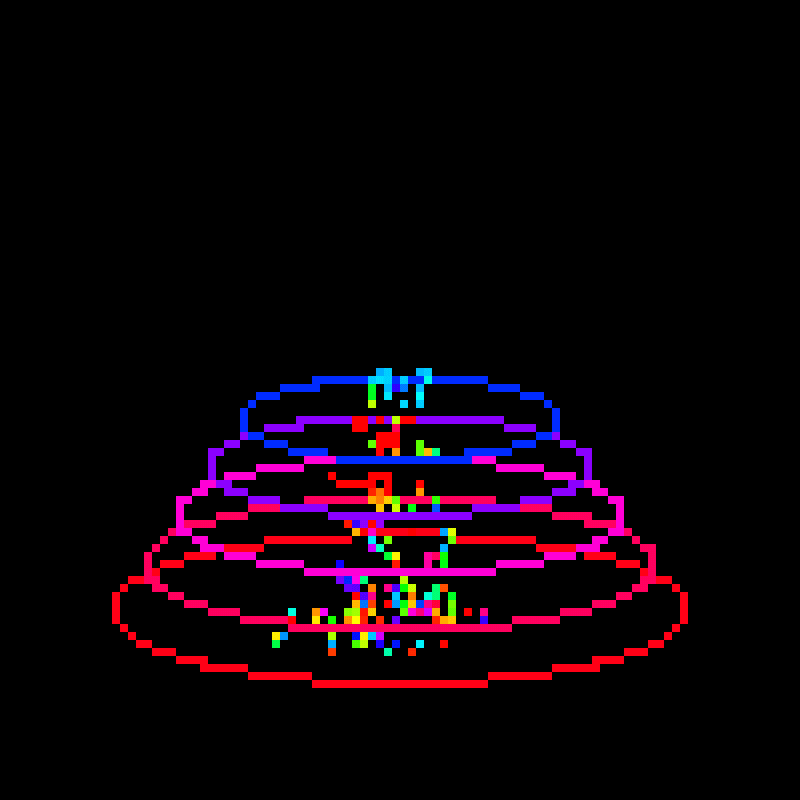
HEN’s Impact on Digital Art : A Collective Retrospective
In concluding our journey through the RIP HEN retrospective, we turn to the voices of its early members, whose reflections encapsulate the platform’s profound impact on the digital art world with a special focus on their answers when asked “In retrospect, what do you believe was HEN’s most significant contribution to the digital art community as a whole?”
Haydriroket: HEN wasn’t just another platform; it was a beacon in the digital night, a place that redefined the NFT world in ways that still resonate.
First off, it was all about breaking down barriers. Before HEN, the NFT scene felt kind of like an exclusive club, right? But HEN changed the rules. It was like a digital art festival where everyone was invited, no matter where you came from or how much you knew about NFTs. This openness made the digital art world much more vibrant and diverse. It wasn’t just about selling art; it was about sharing it, experiencing it, living it.
But you know, the heart of HEN’s magic was its community. The platform created a space where artists, collectors, and digital art enthusiasts could connect in a way that was real and meaningful. It was like this cool, digital neighborhood where everyone knew each other and supported each other’s work. This sense of community, this feeling of being part of something bigger – that’s the soul of HEN.
In the end, HEN’s legacy is about more than just the art that was created and sold. It’s about how it transformed the digital art world. It showed us a new way to create, to connect, to care. HEN was a pioneer, a trailblazer, a digital dream made real. And that spirit, that drive to innovate and bring people together, that’s what continues to inspire and shape the digital art world today.
Presstube: I think HEN demonstrated a path for an art subculture where low operating costs and highly fractionalized art pricing/ownership could lead to a vibrant scene where artists support each other. In a time rife with “audience capture”, what better audience to be captured by than fellow creators whose art you adore!
Poppel: I love Web1 and I love anonymity so much. I love the time before Facebook and later Google+ which all promoted the use of real life names and photos for different online services. The NFT space reminds me of the old days so much, and one can behave like one was living those days: You can be a 12 year old vampire or an anthropomorphic Triceratops, and your art is loved and collected by people with furry avatars and funny IDs. I don’t know the identities of most of the artists I interacted with and collected from, and it doesn’t matter. And what’s better? Suddenly you don’t need to pitch your works to galleries and museums and beg them to take 70% of the profit from you anymore. HEN showed me that anonymous artists can sell their art just with a few clicks. I’ve always been an “outsider artist”, I choose Tumblr over physical galleries filled with works that no one understands nor can relate to. Tumblr and similar platforms have cultivated the aesthetic taste of a whole generation, and that’s a whole new type of art lovers and art consumers. And HEN was the “Tumblr with a collect button”. It was not the only platform to ensure that, but it was the one that didn’t bar you outside of it with high gas fees.
Besides being a permissionless platform for everyone to participate in the revolution of digital art distribution, I also want to talk about the financial part of it. HEN made me realise that no matter where you come from, you can be rewarded with the same currency for your works, which to me is one of the most positive things about the application of cryptocurrency. I take it as ensuring equal opportunity for art/content creators on the most grounded level – the currency level. We know how it is outside Web3: video game companies from NA outsources art content production to less developed regions. Workers need to crunch like hell, and in the end they were paid in their native currency which is not that much. Talking about the dark side of globalisation. I’m grateful that we are able to sell our artwork directly to collectors for cryptocurrencies, and I believe we are still far away from touching the true potential of crypto, as well as the true potential of distribution of digital art with blockchain technology.
Djangobits: Maybe the experience that things can be taken in your own hands. On how you engage with your audience and how you sell your art or how you organize as a global collective. The platforms you interact on, can be influenced and shaped to some extent. Or new platforms can be built, like fxhash for example, which also had its origins in the generative and code based artworks that appeared on the HEN.
We would like to thank all those who contributed to this commemorative article. Their extensive interviews and viewpoints about HEN can be found at the following links:
Voices of Hic et Nunc: The People that Shaped its History – Featuring Mario Klingemann, Diane Drubay, and James Paterson (Presstube)
The Essence of HEN: In Conversation with the Artists and Collectors – Featuring Djangobits, Haydiroket, and Poppel
fakewhale
Founded in 2021, Fakewhale advocates the digital art market's evolution. Viewing NFT technology as a container for art, and leveraging the expansive scope of digital culture, Fakewhale strives to shape a new ecosystem in which art and technology become the starting point, rather than the final destination.
You may also like
Dawn is now once again, at GPS – Greenfield Project Space, London
Dawn is now once again by Šimon Chovan, Estefanía B Flores, Janina Frye, Lidija Kononenko, Maya Ma
Losing the Backup Fragments of a Fading Digital Memory
A few months ago, my computer was stolen. With no backup. In an instant, I lost photos, writings, vi
Thomas Scheibitz, >>>X<<< at TICK TACK, Antwerpen
>>>X<<< by Thomas Scheibitz, curated by TICK TACK, at TICK TACK, Antwerpen, 14/02/



